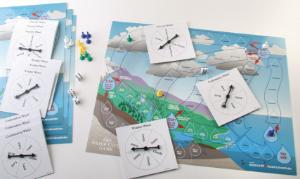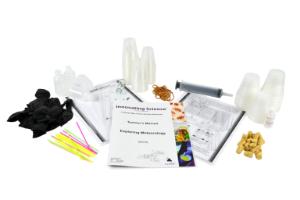Brace Yourself: Weather's Getting Extreme! Plus a free AccessScience handout
From hurricanes to heat waves, students explore why extreme weather is becoming a hot (or cold) topic.
Get free access to AccessScience for your school!
AccessScience is an award-winning, digital STEM resource containing thousands of exclusive articles written by expert scientists and engineers, biographies of well-known scientific figures, curated videos and animations, downloadable images, and much, much more.
McGraw Hill will work with your school librarian to request a no-obligation, free trial. Fill out the form attached to the Free Trial Request page and discover how valuable AccessScience can be for you and your students! Request your free trial today.
High School
Whether it's hurricanes sweeping across the Eastern Seaboard or heat waves that could melt crayons1, extreme weather is becoming a hot (sometimes cold) topic. We’re all fascinated by nature’s wild side—but what makes these events tick, and why are they happening more often? Questions like these are just the tip of the iceberg of how you can turn weather wonders into teachable moments for your students.
Weather vs. Climate: Let's Clear the Air
What's the difference between weather and climate? Weather (short-term atmospheric conditions) is like a person’s mood—it changes frequently and can be sunny, stormy, or anything in between on any given day. On the other hand, climate (weather patterns in a region over an extended period—typically 30 years) is like a person's personality—the overall pattern or trend that defines them over time. Extreme weather events are those dramatic twists, the moments that get everyone talking and cause a mad rush to the grocery store.
From Thunderstorms to Snap-Freezes: What's Considered "Extreme"?
Extreme weather isn’t just about hurricanes or blizzards—it’s any weather event that's unusual for its location or happens with wild intensity. Heat waves, cold snaps, and hailstorms make the cut. Interestingly, what's extreme in one place might be totally normal somewhere else. Picture a 3-inch rainfall in Las Vegas—yep, that's extreme there, likely causing flash floods, but it would just be a typical rainy afternoon for Seattle!2
How Could Extreme Cold Snaps Still Happen if the Earth is Warming?
Extreme cold can still occur during global warming due to polar vortex disruptions, rapid Arctic warming, and changing weather patterns. A warmer atmosphere also holds more moisture, which can lead to intense snowstorms in cold regions. Even though extremely cold weather might happen less often, it can still be intense when it does occur.
There’s no question about it: weather is unpredictable, extreme events are becoming more common, and climate change is a key factor. By including these real-world phenomena in your lessons, you can show students how extreme weather works, and science can help us understand and prepare for it. You can make the stormiest of topics engaging for your budding meteorologists.
Ready to explore more?
Check out the McGraw Hill Access Science article, Extreme Weather, for an in-depth look at the science behind extreme weather, the purpose of forecasting, the impact of climate change, and more. The free download also includes assessment questions and answers you can use to test student understanding.
1. In July 2024, the National Weather Service in Las Vegas shared a time-lapse video of crayons melting in the desert city's extreme heat. 2. World Climate: The average annual rainfall in Las Vegas is 4.17 inches (110 mm) per year; the average annual rainfall in Seattle, Washington, is 37.13 inches. 3. PBS News: Why extreme cold weather events still happen in a warming world. Science Jan 21, 2024
Recommended Products
[StartProductBlock]

Water Cycle Game
Students flow through the various components of the water cycle on their way back to the ocean. Entertain while educating about the hydro-logic of porosity and groundwater versus land runoff.
[EndProductBlock]
[StartProductBlock]

Exploring Meteorology
Students study pressure changes and barometers, wind speed, and anemometers. The instructor forms a vapor cloud to demonstrate how clouds form.
[EndProductBlock]
[StartProductBlock]

La Crosse Wireless Indoor and Outdoor Weather Station
Precise, real-time weather data straight from the backyard or classroom. Indoor and outdoor temperature and humidity are conveniently displayed on the high-contrast LCD display.
